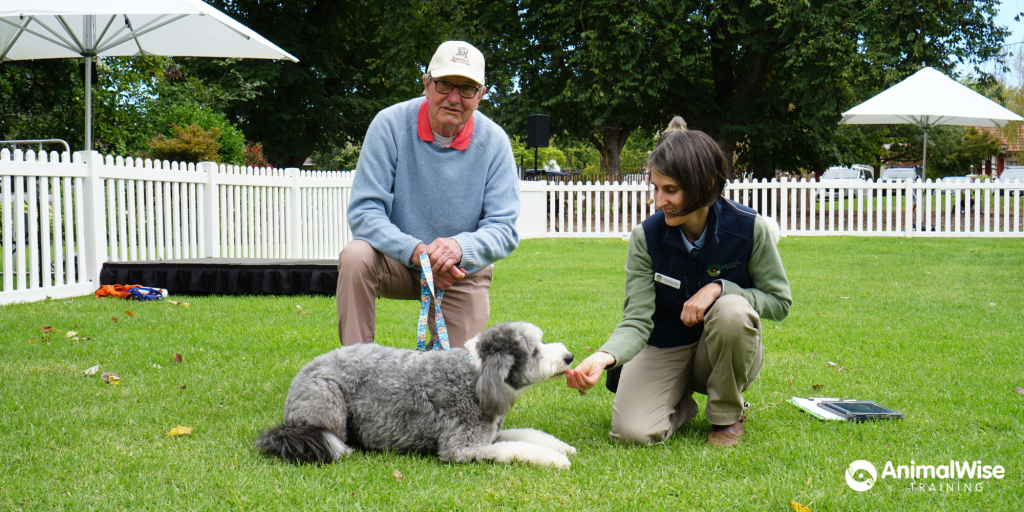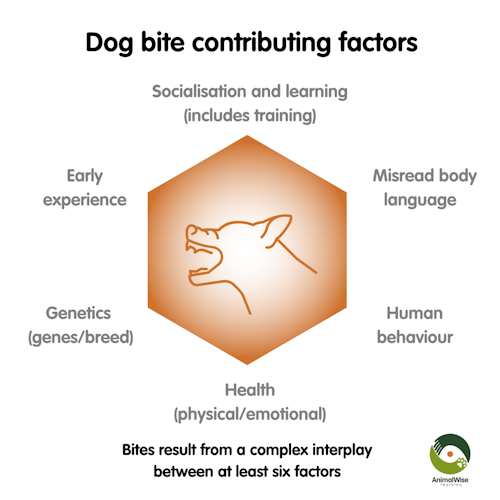There has been a notable increase in dog bites worldwide, and education can play a key role in reducing the number of incidences.
In Part 1, we discussed the notable increase in dog bites worldwide, including in Australia, and while genetics play a role, dog bites result from a complex interplay between multiple interacting factors.
In Part 2, we explored three of those factors: the role of proper socialisation and training, misreading body language and human behaviours that may trigger dogs.

Dog bites result from a complex interplay between multiple interacting factors. Let’s explore in detail, the key role education can play in reducing dog bites.

Education & awareness – the key to reducing dog bites
Education has long been touted as the key to reducing dog bites.
So where do owners and other members of the general public learn how to read dog body language and appropriate behaviour around dogs?
Certainly, dog owners have many avenues where they may come across some of this information, such as breeders, vets, pet stores, and dog trainers, to name just a few. However, none of these roles have the primary objective of teaching the dog owner to read dog body language and what human behaviours and postures to avoid that make dogs uncomfortable. Many dog trainers go a long way to achieving this, but not all dog owners seek out the assistance of trainers.
Educating Children
Educating children on how to interact safely with dogs is a vital piece of the puzzle and has been instituted around the country for many years through various government and non-government initiatives. However, these initiatives have not been enough to halt the increase in dog bites. It may well be that more content repetition throughout primary school is needed or that a lack of consistent messaging at home is counteracting what is learnt at school. Several studies found that focusing on intensive community-based adult education reduced dog bite rates and is potentially a missing piece in the current strategy.[i]
Public education campaigns can play a significant role in reducing dog bites. In response to recording over 500 dog bite hospital admissions a year, the Dog and Cat Management Board of South Australia invested in an awareness campaign called “Good dogs have bad days”. Key dog safety messaging was promoted via radio, television, and outdoor and digital advertisements in late 2023, and we eagerly await the analysis of hospital admission data to see if it has made an impact.
Television Programs
Television programs about dogs and training have the potential to reach both children and adults alike to raise awareness about dog risk and body language. Unfortunately, some celebrity trainers still use training methods that may increase anxiety and, therefore, aggression. For TV programs to be effective, messaging must be consistent and aligned with positive rewards-based training methods. Programs would also need to risk being unpopular by consistently identifying when human behaviours such as “hugs and pats” are not being enjoyed by the canine protagonist.
Local Council Community Training
Other sources recommend a more localised approach to community dog safety education. For example, councils wanting to prevent a rise in dog attacks could support the organisation of in-person and online community dog training classes. These sessions could be open to all or try to prioritise low-income dog owners, who may struggle to access conventional dog training. Promoting the importance of dog trainers using positive rewards-based methods (and avoiding aversive or punishment based methods) is a key stategy.
Councils could pair up with local shelters or welfare groups who have professional positive reinforcement dog trainers on their teams. An example is the council-sponsored “Dogs in the Park” sessions run by The Lost Dogs’ Home around Melbourne. These sessions are free to the public and held in easily accessible spaces, addressing common owner challenges like dog recall and loose leash walking. The program aims to prevent dog surrenders due to behaviour issues and reduce dog-related incidents.
Councils could also use their contact with new owners via the animal registration process to provide information about local appropriate positive rewards-based dog training classes and available pet education options. This could help increase the owner’s understanding of dog body language, with the flow-on effect of reducing dog attacks in homes, parks and open spaces.
Councils could also use these opportunities to promote key messages of responsible pet ownership, including the importance of having well-socialised and well-trained dogs that are under effective control in public spaces.
Dog bites are a complex issue
The increase in dog bites in our community is a complex issue that requires a multi-faceted approach. It’s not about labelling certain breeds as dangerous but understanding the deeper communication and behavioural factors at play.
Through education, knowledge sharing, responsible ownership, and a community-wide effort to understand our canine companions, we can work towards a significant reduction in dog bites. Let’s strive to create a safer environment for both humans and dogs alike.
Read Understanding the rise in dog bites Part 1: It’s not the breed, it’s the body language HERE.
Read Understanding the rise in dog bites Part 2: Factors that contribute to dog bites HERE
[i] Duncan-Sutherland, N., Lissaman, A. C., Shepherd, M., & Kool, B. (2022). Systematic review of dog bite prevention strategies. Injury Prevention, (28), 288-297. https://doi.org/10.1136/injuryprev-2021-044477
